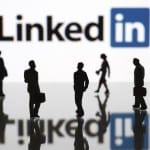Having a high-profile PR client can be exciting and profitable, but it brings with it a number of intangibles and unexpected twists you might not have foreseen. Even though the media wants a high-profile client, and you would think that would be easier than getting publicity for a regular client, these requests often come in bunches and at odd hours.
PR Insiders


How to Make Certain Your Media Pitches Will Not Be Ignored
May 16th, 2016 by Arthur SolomonWhen it comes to pitching a story, there are various tenets that I have always disagreed with, e.g.: reporters and editors won’t read a pitch longer than a few sentences; when trying to place a photo accompany it with a short caption; TV pitches have a better chance of success when B-roll is available. But there are some rules that I have always enforced with account execs so that their pitches at least have a chance of success.

Crisis Communications Lessons From the Campaign Trail
May 12th, 2016 by Caitlin RourkThe 2016 presidential election has been nothing short of a spectacle, turning traditional political conventions (no pun intended) squarely on their head. And just as this election has forced the political establishment to alter its strategies, business organizations must re-evaluate how to approach the unpredictable and unforgiving crises they face in today’s new media landscape.

Social Media: Why Communicators Should Play by the Rules…or Not
May 11th, 2016 by Seth ArensteinAfter a recent afternoon of listening to social media experts, it’s clear many of us are unknowingly interacting on virgin land on a daily basis. Certainly social media has been legitimized. Nearly every business has a social presence, as do nearly 90% of the 193 U.N. country governments and world leaders, even the Pope, a Burson-Marsteller report says.
Social Media: Why Communicators Should Play by the Rules…or Not
May 11th, 2016 by Seth Arenstein“I just want to get away from it all” is a popular refrain, especially around vacation time. It could be one of the reasons reality shows about Alaska have been so popular—uncharted territory can be… Continued

Why Your Brand Should Have LinkedIn Guidelines for Employees
May 11th, 2016 by Liz GuthridgeMany companies don’t even refer to LinkedIn in their social media policies, much less provide guidance on how to use LinkedIn effectively. By contrast, policies frequently describe how employees are to behave with Facebook, Twitter, Instagram and others. As a result, companies are taking a big risk with LinkedIn if employees “go rogue” and don’t consider their company’s brand when writing their LinkedIn profiles.

How to Turn Data into Different Infographics for Different Audiences
May 10th, 2016 by Albert LewisAs communications professionals, a significant part of our job is to tell well-developed stories that engage target audiences. With recent research suggesting that brands have less than four seconds to hold consumers’ attention on a web page before they move on, it’s important now more than ever to consider the various vehicles to tell our stories in a compelling way.

5 Smart Ways to Grab Headlines During an Election Year
May 4th, 2016 by Jamie Izaks, All Points Public RelationsDuring an election year, it can seem like the news cycles are constantly dominated by tawdry political scandals, controversial sound bites and mountains of op-eds and think pieces. How’s a PR pro supposed to grab headlines in a positive way amid massive election coverage?

Micro-Influencers for Maximum Impact
May 4th, 2016 by Sarah WareAs influencers’ follower numbers rise, engagement actually decreases. Basically, having a larger following does not mean that their followers are more engaged, which can be an issue to brands trying to reach their target audiences through these individuals. Micro-influencers better connect with their followers due to their targeted focus on very niche areas and topics.

3 Best Practices for When Crisis Strikes on Campus
May 2nd, 2016 by Katherine HerringUniversities today seem to be more vulnerable than ever to reputational crises. Not only are they educational and research institutions, but they are also home to major athletic programs, Greek life communities, alumni organizations and political groups. It is all of these stakeholders that make universities not only strong but also vulnerable to the unexpected event that could cause significant damage to the institution’s reputation.


